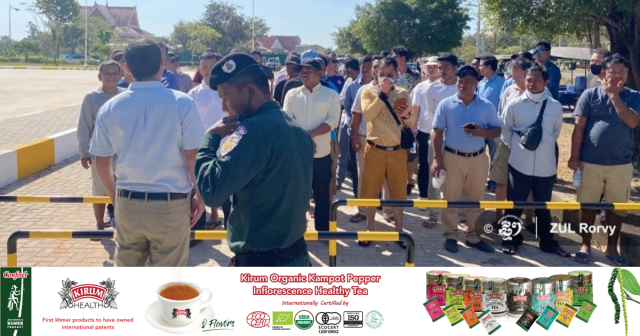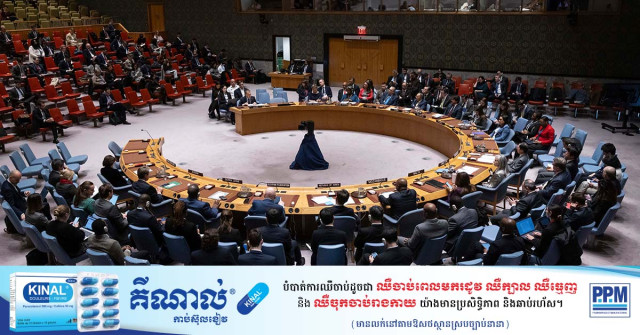Tuk-Tuks, Taxis Express Discontent Over Siem Reap Airport Access Fee

- By Zul Rorvy
- and Meng Seavmey
- January 4, 2024 9:00 PM
PHNOM PENH – Around 70 taxi and tuk-tuk drivers gathered in front of the Siem Reap Provincial Administration’s building on Jan. 3 to seek intervention from local authorities after they had been asked to pay a fee to use the access road that leads to the new airport since Jan. 1.
“We have to spend a lot to use the road to get to the airport while we don’t earn much from passengers. Since the new airport is further [than the former one], we already have to spend more on fuel. To sum up, we don’t make much profit,” said Dara, a tuk-tuk driver who joined the gathering, in a phone interview.
Since the first day of 2024, all types of vehicles are required to pay a fee, which is presented as financial compensation for using the 25-kilometer-long access road leading to the Siem Reap-Angkor International Airport.
According to local sources, the toll station is located around 500 meters away from the airport and only concerns entering vehicles.
Even though the toll fee depends on the type of vehicle, taxi and tuk-tuk drivers complain it adds a financial burden to their activity, which has been running very slow for the past four years because of the COVID-19 pandemic.
According to Angkor International Airport Investment (AIAI), the Chinese company that runs the new airport and the access road, fees are divided into four categories.
Family cars and tuk-tuks are charged $3 to use the road leading to the airport, while larger vehicles with a capacity of up to 19 passengers and/or up to nine metric tons of goods are charged $6. Buses or trucks transporting more than 19 passengers and/or between nine and ten metric tons of goods are charged $9. Vehicles carrying more than ten tons of goods are charged $12.
In addition to the toll fee, vehicles have to pay for parking.
Tuk-tuk and taxi drivers said they had decided to wait for passengers before the toll station since the beginning of the year, but had been chased away by airport security.
At the gathering on Jan. 3, they also called for better organization in the airport waiting area, to ease the pick-up and drop-off of passengers.
On Jan. 4, a meeting was held in Phnom Penh to try to resolve the fee issue. It was attended by Minister of Public Works and Transportation Peng Ponea, his predecessor Sun Chanthol – who was in charge of the project during the airport’s construction – and several representatives of the State Secretariat of Civil Aviation.
Following the meeting, Chanthol announced a working group would assess the situation at the airport and then discuss directly with the AIAI to find the best solution to providing benefits to both the Chinese investors and local transport service providers, according to a ministry’s post, issued on Jan. 4.
The Siem Reap-Angkor International Airport opened its doors in October 2023 and is located around 45 kilometers away from the city of Siem Reap. It replaced the former, yet perfectly functioning, facility that was less than 10 kilometers away from the city.
The new airport cost $1.1 billion, invested by the Angkor International Airport Investment (AIAI) company, which will operate it for 55 years over a Build-Operate-Transfer (BOT) scheme.
With its 3.6-kilometer-long runway, it can accommodate long-haul flights, a first in the province’s history.















